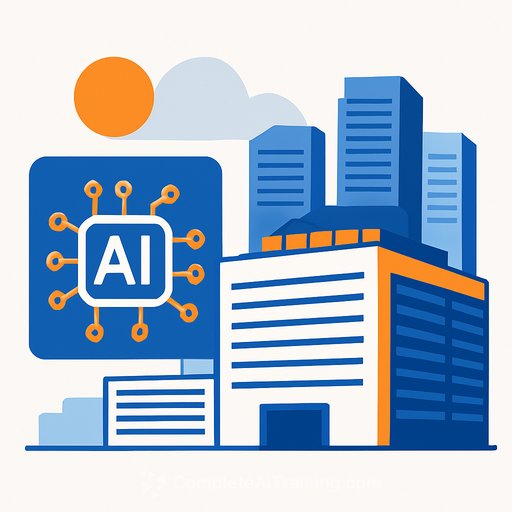Mitsubishi unveils US$15B plan to build 14 AI-ready data center campuses across the US
Japan's Mitsubishi Estate is pushing into US digital infrastructure with a plan to develop 14 large-scale data center campuses by 2030. The program totals 2.3 trillion yen (about US$15 billion) and targets roughly 2.8 GW of capacity, led in the US by subsidiary TA Realty.
Mitsubishi Estate will commit around 180 billion yen (about US$1.1 billion) of its own capital, with the remainder coming from institutional investors and corporate partners. Execution will mix build-to-lease and speculative delivery, with potential asset sales after completion.
Where they're building-and why it matters
The company has completed its first US facility in Virginia and confirmed future projects in Virginia, Georgia, and Illinois. These markets offer strong grid access, dense fiber routes, and proximity to major cloud customers-key drivers for hyperscale sites.
The largest project is a 430 MW campus in Loudoun County, Virginia, slated for completion in 2027. That location sits inside "Data Center Alley," one of the most connected areas in the country and a focal point for hyperscale growth. Learn more about Loudoun County's data center ecosystem.
Tenant demand is already lining up
Two planned facilities have reportedly secured US tech tenants, including Amazon Web Services and Google Cloud. Pre-leasing at this stage signals tight demand for large blocks of power and space, as well as the need for repeatable designs, rapid schedules, and reliable delivery partners.
Capital stack and delivery model
The capital plan blends Mitsubishi Estate's equity with funds from institutional investors and corporate partners. Expect JV structures, phased site rollouts, and exit optionality through asset sales once stabilized.
For general contractors and trade partners, the mix of pre-leased and speculative development means parallel workstreams, standardized design kits, and heavy coordination with utilities. For owners and developers, the model supports scale while managing leasing risk across multiple states.
What this means for real estate and construction teams
- Land: Large, power-adjacent parcels near transmission or substations will price at a premium. Expect multi-parcel assemblages and zoning/permitting campaigns that start early.
- Power: Interconnection queue position, substation timelines, and transformer availability will drive schedules as much as sitework. Early utility engagement is non-negotiable.
- Design: Standardized, scalable blocks (50-100+ MW phases) with room for liquid cooling retrofits will become the default. Mechanical and electrical rooms designed for higher densities will pay off.
- Supply chain: Long-lead gear-HV transformers, switchgear, generators, chillers-needs locked allocations. Prefab and modular skids can cut months off delivery.
- Labor: Peak labor demand will be heavy on electrical, controls, and HVAC trades. Workforce planning and multi-market labor agreements will reduce churn and delay.
- Connectivity: Access to diverse long-haul fiber and metro rings is as important as the grid. Coordinate with carriers early to avoid directional boring and manhole delays becoming the critical path.
- Incentives: Virginia, Georgia, and Illinois offer meaningful data center incentives tied to capex and jobs. Verify eligibility and start documentation early. Example: Virginia data center tax guidance.
Key risks to watch
- Equipment lead times: Large transformers and generators can stretch 80-120 weeks without pre-buys or framework agreements.
- Interconnection delays: Queue reform and study bottlenecks can push energization beyond building completion.
- Local constraints: Noise, emissions, and water usage (for certain cooling strategies) can trigger community pushback and additional conditions.
- Permitting cadence: Multi-phase campuses need a permit sequencing plan that de-risks critical path activities and aligns with tenant move-in windows.
- Cost escalation: Steel, copper, and switchgear pricing can swing budgets. Escalation clauses and indexed bids help protect margins.
Practical next steps for developers, GCs, and suppliers
- Secure sites within reach of existing or planned substations; map easements and transmission upgrades upfront.
- Hold long-lead materials via master supply agreements; align factory slots with phased energization dates.
- Adopt repeatable design kits across markets; use prefab electrical rooms and cooling skids to compress schedules.
- Shift coordination with utilities to day zero; establish joint schedules and monthly executive reviews.
- Build a dedicated data center labor bench and training pipeline for high-voltage and controls.
- Offer phased delivery options (e.g., 24-36 MW blocks) to match tenant ramp while improving cash flow.
The bottom line
Fourteen campuses and 2.8 GW by 2030 is a big swing-and a clear signal that AI and cloud demand are anchoring the next cycle of industrial-scale development. For real estate and construction teams, the advantage goes to those who lock power, standardize delivery, and get ahead of supply chain and labor constraints.
Your membership also unlocks:






